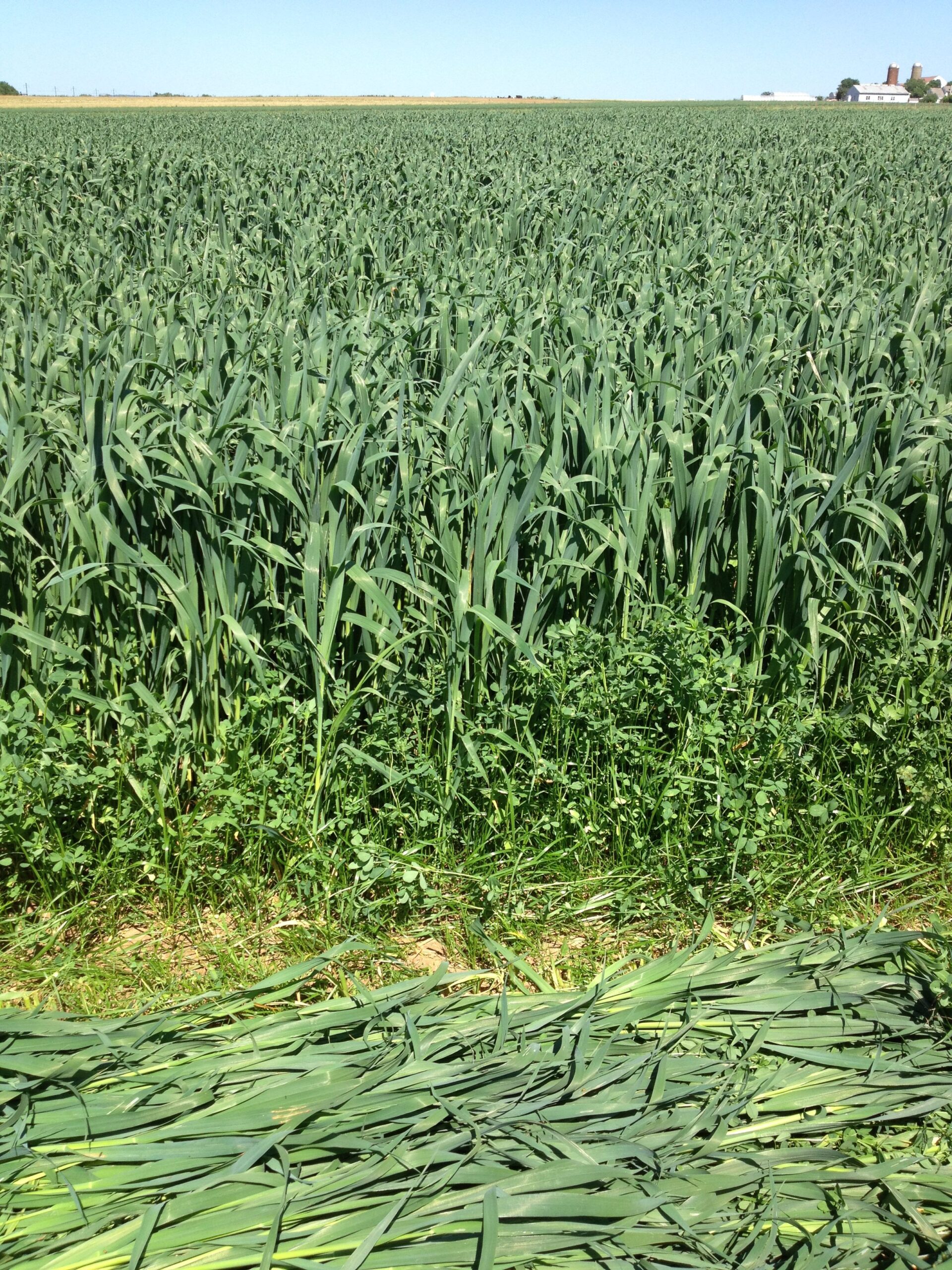Next-Gen Steward
This young farmer started his farm by purchasing a portion of his Dad’s farm and dairy cows. In his community, instead of paying for college, families help their children buy their own farms when they are ready. Since some of his cows come from his father’s herd, this ensures that the cows are well adapted to the farm, its land, and the family, which translates into a smoother startup for a young farmer.
It takes two years for a heifer calf to start milking for the first time. Most of the cows on this farm will have 4 or 5 lactations, or milking seasons. Cows produce more milk after their first lactation, and this combined with the 2 years it takes for a cow to produce milk means that cow longevity is very important to the profitability of small family farms. The average dairy cow in the US only has 2.8 lactations. Longevity is also an indicator of cow health, and cows on organic farms like this one that have regular access to pasture and the exercise and fresh air that comes with it, tend to have fewer health problems.

Always looking to improve the farm’s efficiency and long-term impact on the land, this farmer has started using rye as a cover crop in his crop rotation. Cover crops are planted after the harvest of the main crop is complete to benefit future crops, help with soil erosion, improve soil health, control weeds and pests, and increase biodiversity, among other benefits. In addition to rye, other cover crops could be winter hearty plants such as barley, oats, and wheat. When grains are harvested, the crop residues die back and help improve soil tilth. Less common cover crops are legumes, and plants like hairy vetch or red clover. These crops can perform nitrogen fixation, which converts nitrous oxide in the air into nutrients that improve soil fertility. Some farmers like this one will use grain cover crops as “nurse crops” for legumes like alfalfa that take longer to germinate. This is more common on organic farms that do not use chemicals for weed control. Turnips, and things like daikon radish are planted in the fall and help break up compacted soil when they die off and leave spaces behind that make it easier for the new crops to grow.
In summary, according to the USDA Natural Resources Conservation Service (NRCS) cover crops have a litany of benefits, including:
- Reduce soil erosion
- Improve soil health
- Increase soil porosity and infiltration
- Weed fighting
- Improve soil microbiology
- Produce and scavenge crop nutrients
- Reduce soil compaction
- Improve nutrient cycling
- Improve soil organic matter
- Protect water quality by lessening water run-off
- Protect the environment
- Enhanced wildlife habitat
Cover cropping isn’t just something that’s good for commercial farmers, it works equally as well in home gardens.
To learn more about cover crops, see:
https://extension.umd.edu/resource/rethinking-cow-longevity
For more on impact pasture-based dairy systems on animal welfare, see:
https://pubmed.ncbi.nlm.nih.gov/33865573
J. Dairy Sci. 104:7364-7382. https://doi.org/10.3168/jds.2020-19776
A note about our photos: We are excited to use photos to connect you to the farms that supply milk for your Organic Squeaks so you can learn about the wide range of eco-active practices they use. Unless noted otherwise, these photos were taken on this farm by a photographer who is also one of our farmers. We respect the culture and privacy preferences of our farm partners, which is why you won’t always see people in our photos.

